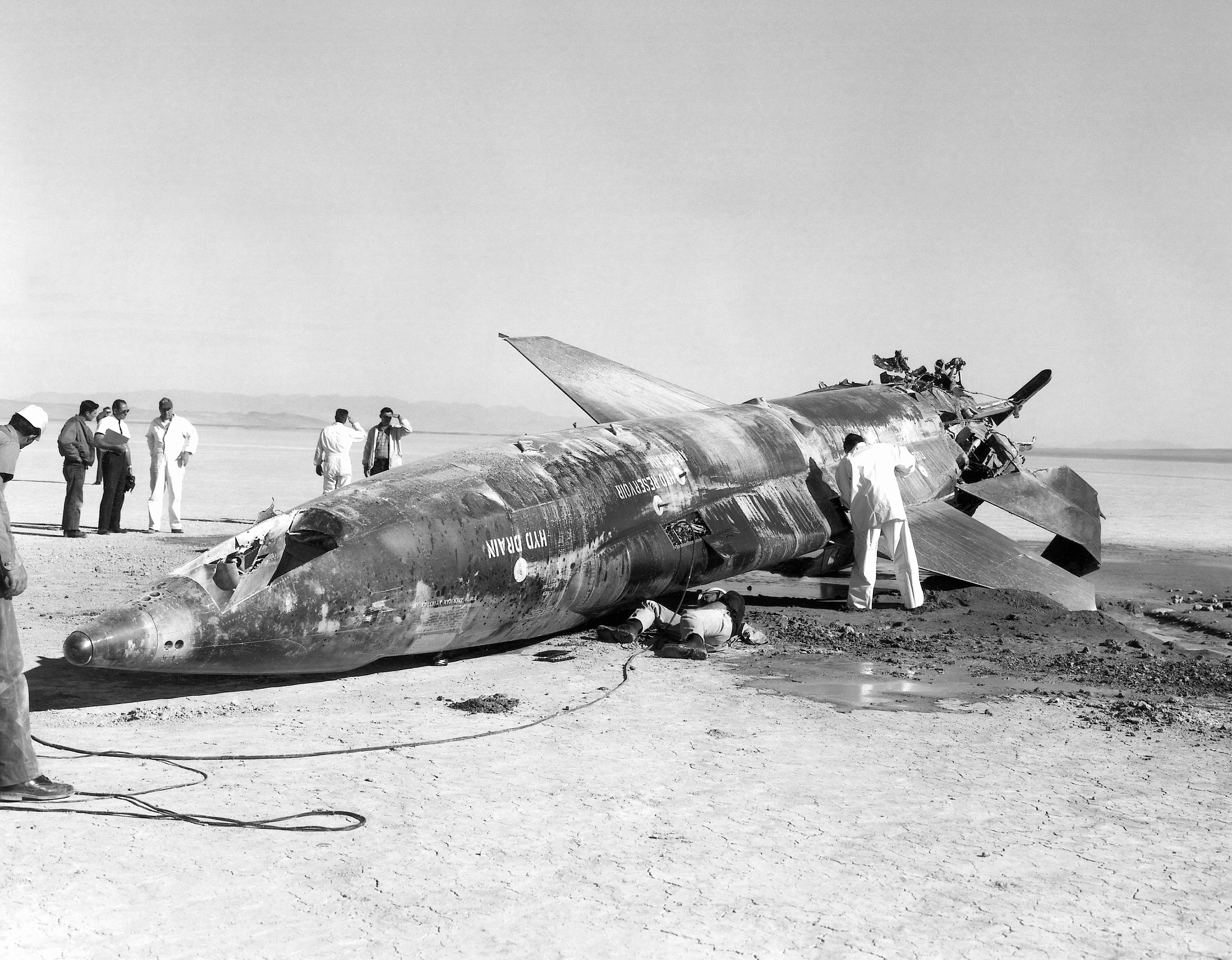Military
The North American X-15: Breaking Speed Barriers as the World’s Fastest Manned Rocket Aircraft.
The thumbnail picture of this article is the North American X-15. It may seem rather simple but it is the fastest manned aircraft in History and still is today even after more than 50 years.
It gave to NASA many important innovations for its conquest of space and future high-speed flights test.
Back on October 14, 1947, Chuck Yeager, a recognized pilot who fought during the Second World War, breaks the speed of sound for the first time during the test flight of its Bell X-1 rocket plane. Immediately following this success, a surge of research and development in the field of supersonic flight was catalyzed and will give birth to many other projects, such as the Douglas X-3 Stiletto that will attempt to achieve long-lasting supersonic flights in 1952 or the X-2 Starbuster, that will be the first aircraft to overtake Mach 3 in 1955.
On October 3, 1967, 20 years after Chuck Yeager achievement, another man is about to enter the History of aviation. On board his X-15, Pete Knight pilot of the US Air Force, achieves the world record of airspeed flight in an aircraft at 7,273 km / h at 31 km of altitude.
Even today, this speed has never been exceeded by any other manned aircraft.
HISTORY
The North American X-15 was built as part of a research program on very high-speed and high altitude flights.
Unable to take off on its own, the X-15 is hung under the wing of a modified Boeing B-52 Stratofortress, then dropped over 15,000 meters of altitude. The rocket engine is then lit to propel the aircraft to the upper atmosphere, the X-15 follows then a ballistic trajectory before descending in free flight like a glider.
The story of the project begins in February 1954, the National Advisory Committee for Aeronautics (the ancestor of NASA) establishes the need for a new experimental aircraft to explore flights at very high speed and very high altitude. A team of researchers is responsible for finding solutions to the many problems raised and reports back in April 1954, indicating that there is no major obstacle given the techniques of the time.
The launch of the project was validated in October 1954, with 95% funded by the US Air Force and 5% by the US Navy, and a call for tenders was launched at the same time.
Construction

North American Aviation’s proposal was accepted, and an order for the construction of 3 copies was signed in December 1955. In February 1956, the rocket engine development was entrusted to Reaction Motors, which offered a thruster derived from that of Viking rockets.
The news aircraft not being able to take off alone, two Boeing B-52 Stratofortress are modified, mainly on the wings, to carry the X-15 at high altitude.
The construction of the planes began mid-1957, and the first X-15 left the factory on October 15, 1958. Half a plane, half a rocket. The device has many features that make it unique for the time.
The X-15 is built with various special alloys and is able to withstand temperatures of 1472 °F. Most of the fuselage contains a reservoir of 3900 liters of liquid oxygen and another of 5470 liters of ethanol or ammonia.
At very high altitude, because of the scarcity of air in the atmosphere, control of the aircraft is no longer ensured by conventional control surfaces, but by 12 small hydrogen peroxide rockets placed in the nose and at the end of wings.
The aircraft does not have conventional landing gear and must land on two retractable skids in the back and a wheel in the front.
The ejection seat can be used up to the speed of Mach 4 and an altitude of 36 600 meters. It will never be used during the X-15 program life.
The X-15A-2
The first test flights of the X-15 take place from March 10, 1959. And by the end of 1960, the X-15 had already reached Mach 3 and 30,000 m altitude. After these successes, the plane is then transferred to NASA who will begin its search flights.
But after a severe accident during a landing on November 9, 1962, it was decided to rebuild an X-15 number 2 by modifying it, on the one hand, to make it able to reach a Mach 8 speed and on the other hand , so that it can serve as a flying test bench for a ramjet. The new aircraft will receive the designation of X-15A-2.
The higher speed must be obtained by increasing the operating time of the rocket engine, which requires increasing the fuel/oxidizer capacity. For this, the fuselage is extended and two additional external tanks installed, one on each side of the fuselage: these tanks were dropped in flight and then recovered.
For the X-15 to withstand higher temperatures than expected, it was decided to coat it with an additional layer of insulation that would breaks up in flight.
The ventral drift is modified to receive a ramjet of 91 cm in diameter. Since it is no longer needed to eject the lower part in flight, the ground clearance must be increased.
The X-15A-2 finally weighs 10 tons more than the X-15, which also requires strengthening the landing gear.
It will be the X-15A-2 that will set the speed record at 7,272.68 km / h, October 3, 1967. During this flight, the surface temperature exceeds the 2372 ° F expected and will cause severe such damage on the flying device that it will become unusable after this speed record.
Accident

Of all the X-15 pilots, five of them came from NASA, five from the US Air Force, one from North American Aviation and one from the US Navy. One of these pilots is none other than Neil Armstrong, the same man that walked on the moon in 1969.
On April 20, 1962, Neil Armstrong, who was still one of the pilots of the X-15 program before joining the Apollo mission, experienced a situation that could have cost him his life. Launched at high speed, his aircraft was in the confines of the atmosphere. When Armstrong tried to start his descent, his X-15 was no more responding. The atmosphere layer where his aircraft was moving was so thin that the X-15 could no longer operate as a normal plane. Armstrong decides just in time to use the x-15 rocket boosters to descend to the atmosphere.
Fortunately the story will end well for Neil Armstrong, and he will land safe and sound a few minutes later. But the X-15 program will experience in the course of its History much more serious accidents:
On November 5, 1959, the X-15 number 2 suddenly folded in two during its landing, as a result of a sudden hit due to a larger mass than expected. The pilot is safe and sound. The flight was interrupted by a fire on one of the two XLR11 engines.
On June 8, 1960, a final XLR99 engine ground test ended with the destruction of the entire rear of X-15 number 3 due to an explosion. The pilot Scott Crossfield is unscathed.
On November 9, 1962, the X-15 number 2 was severely damaged and its pilot John B. McKay seriously injured during a landing: because of a failure of the control surfaces, the plane touched the ground way too quickly at and the left skate breaks because of the shock. The X-15 then made a barrel before falling back on the back.
On November 15, 1967, the X-15 number 3, after becoming uncontrollable, is subjected to too strong load factors during the descent and disintegrates in flight. The pilot, Michael J. Adams, is killed.
Conclusion
The end of the program was decided in 1968, mainly because of the X-15 number 3 accident, but also because of a reorientation of NASA’s budgets. The last flight of an X-15 took place on October 24, 1968.
From 1960 to 1968, the 3 built models made about 200 test flights, breaking all speed and altitude records held by a fixed-wing piloted aircraft.
The program is considered a success and has allowed Americans to collect a great deal of data on very high-speed flights in and out of the atmosphere. These data will enable some years later the development of the space shuttle among others.
Today the only two remaining X-15s are on display at Washington’s National Air and Space Museum and USAF Wright-Patterson AFB Museum near Dayton, Ohio.
As always, don’t forget to watch the video version of this article:
-

 Military3h ago
Military3h agoLed by an Unstoppable Force, These Helicopters Dominate the Skies with Air Superiority.hanh
-

 Military15h ago
Military15h agoLeclerc XLR Main Battle Tank Undergoes Testing by the French General Directorate of Armaments.hanh
-

 Military20h ago
Military20h agoUnrivaled Helicopter Investment: The $27 Million H225 Super Puma.lamz
-

 Military1d ago
Military1d agoExplore the World’s Most Dominant Battlecruiser.hanh
-

 Military1d ago
Military1d agoAn Enhanced Maritime Patrol Day with US Amphibious Ships.lamz
-

 Military2d ago
Military2d agoUnlocking the Versatility of the MH-47G Chinook: A Vital Military Asset.lamz
-

 Military2d ago
Military2d agoUnlocking Nature’s Secrets: The AH-64D Apache – The Backbone of the US Army’s Attack Helicopter Fleet.lamz
-

 Military2d ago
Military2d agoExploring the Abyss: The Deep Submerge Reconnaissance Vehicle.hanh



























